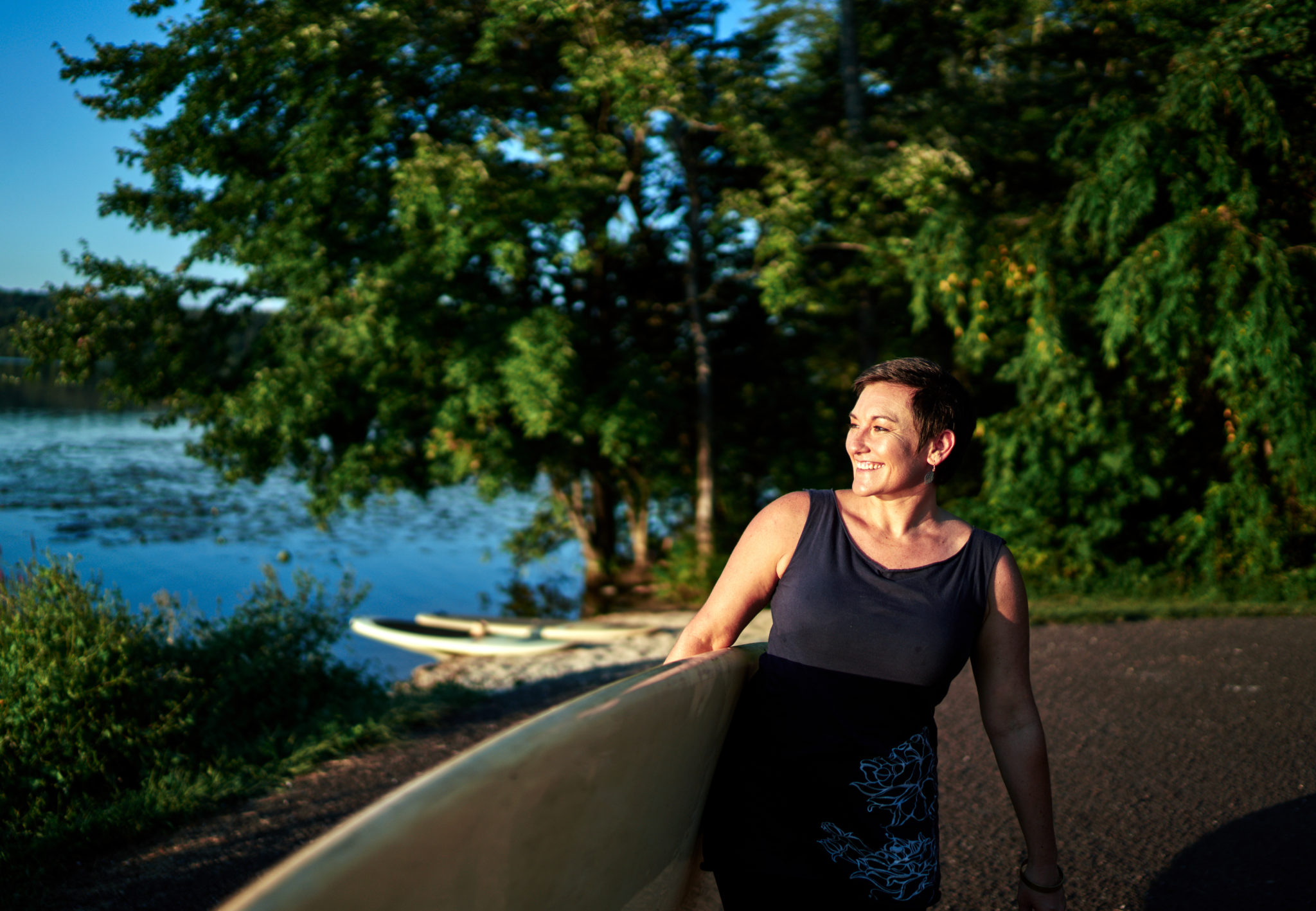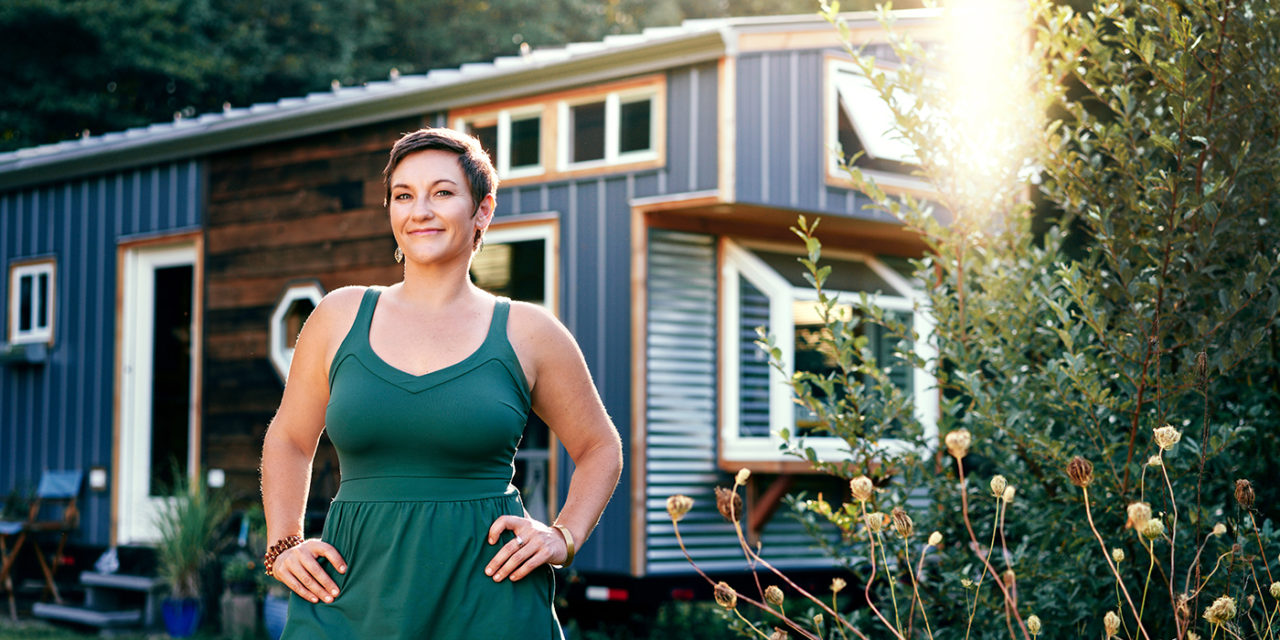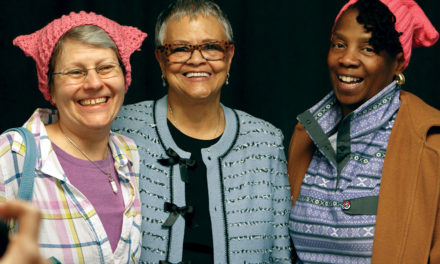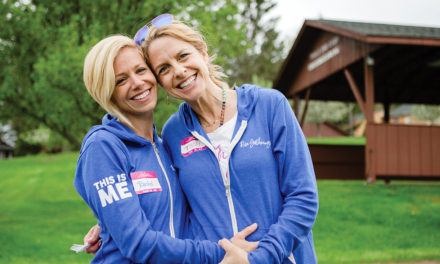To realize her dream of building a sustainable home that would inspire the community, Melissa Matarese needed materials, land, and helping hands. Friends, family, local businesses, and Bucks County delivered on all fronts. Now she’s giving back with education and inspiration.
When you’re talking melting icecaps and rising sea level, the problem of a changing climate feels utterly intractable, and the solution seems completely out of reach.
Even if you can get a grasp on the many ways in which our environment is suffering—pollution, natural resource depletion, deforestation, diminishing ozone layer, ocean acidification—being part of the solution can seem impossible, as one of 7.44 billion people on the planet.
The problem is a one-two punch. Since the Industrial Revolution, the burning of coal, oil, and gas, and clearing of forests have increased the concentration of carbon dioxide in the atmosphere by more than 40 percent. And methane and nitrous oxide emissions from agriculture and other human activities add to the atmospheric burden of heat-trapping gases.
A few years ago, as the scope of the problem crystallized for the public, and its increasingly dire consequences (more catastrophic weather events and consecutive years as the hottest on record) came into focus, Bucks County native Melissa Matarese felt anxious. After spending a year in New Zealand, where stunning natural resources abound, she had developed a strong connection to the environment, and she wanted to do her part to help. “In New Zealand, I discovered a culture rooted in the natural world, an epically diverse environment, and a society focused on sustainability and ingenuity,” she says. “Whatever way we look at it, humans are responsible for a lot of the devastation and heartache the planet is feeling right now,” says 36-year-old Matarese. “We’re an amazing race, and I believe we are beings of love, but we also live really harshly on the planet.”
Matarese created Mesa Lifestyle in 2004, a business that brought together all her passions, including eco-education, art, yoga, and paddleboarding. Her mission is to raise environmental consciousness and empower individuals and communities through art, yoga, and sustainability. “I believe it’s our lifestyle that put us here and put the planet in peril, so it’s changes in our lifestyle that’s going to help bring the planet back to some form of balance and equilibrium again, so we put ourselves in this position, as humans, it’s our responsibility to help us out of this situation now. No other animal is doing this—it’s us.”
Matarese grew up in Bucks County with a childhood dream of building her own house. As she came of age to embark on such a venture, she decided she wanted to build a fully sustainable tiny home. While it sounded crazy to some people she told, tiny homes are part of a growing trend of downsizing in an effort to shrink the carbon footprint we leave behind. For Matarese, building and living in a sustainable tiny home was the kind of effort she could make that would inspire others to find their own ways to contribute to the solution. “If we all were to adapt, just one or two shifts in our everyday lifestyle, all of us as a community of humans, we would make massive impacts right away. As humans, we have that power.”
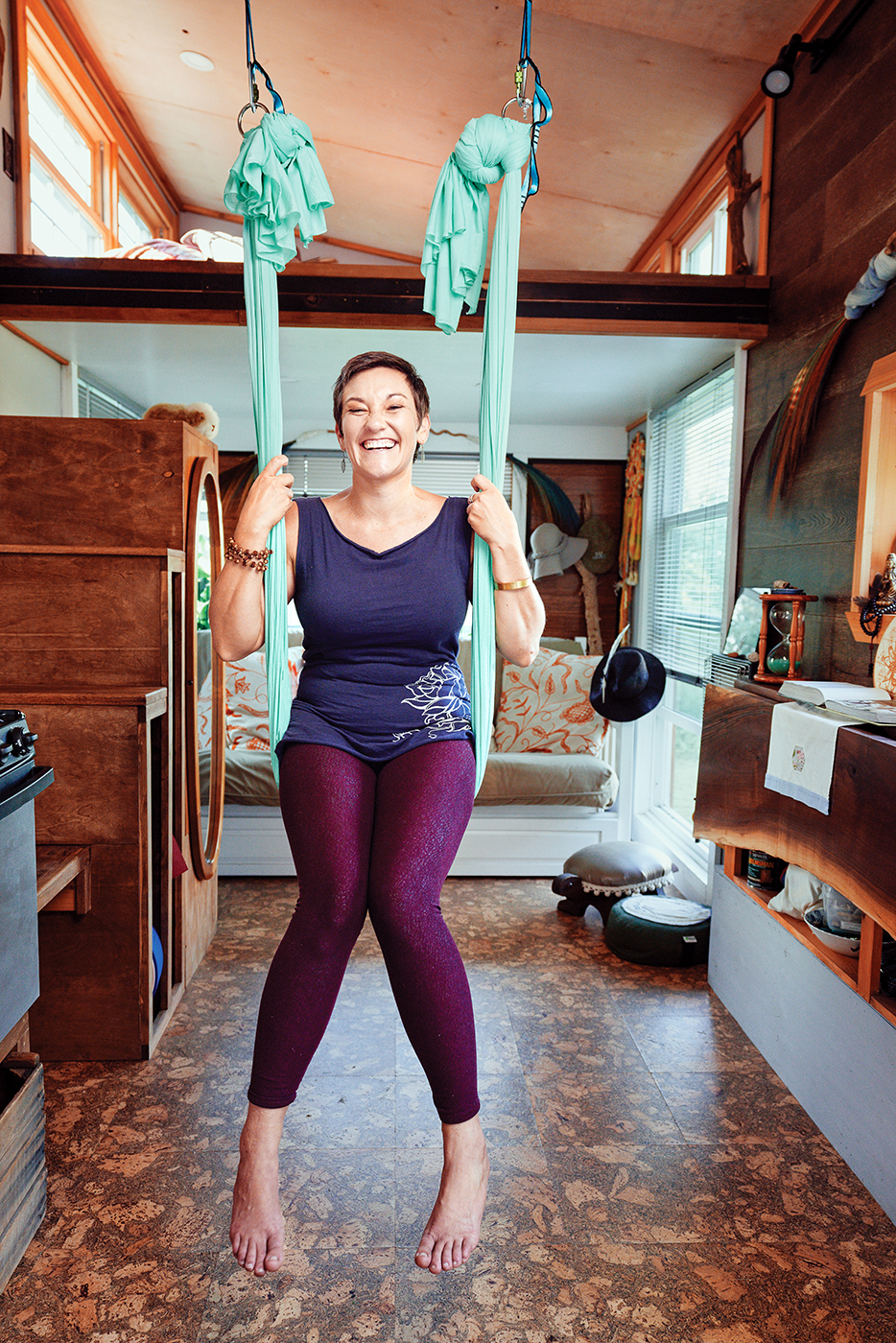
We can all be a lot more mindful, re-using products that are already in existence, for example. I’m not trying to convince people to live in a tiny house, but I’m trying to show them that their choices do have an impact.

10 Things You Can Do Right Now
You know you want to help make a positive environmental impact on the planet. Maybe you’re already mindful of recycling and producing less trash. You’ve cut down on eating out, started composting, and even begun to carpool to work. But how can you make your life greener? Here are 10 smart ideas for things you can do right now.
Switch to Renewable
For a smart place to start, check out Green Mountain Energy, which delivers clean electricity, to help you make the switch. For more information on renewable energy, visit renewenergy.com.
Keep It Separate
Even if you recycle regularly, you can do even more by separating your waste into four categories:
• Garbage – You may realize this will mostly be made up of single-use plastic.
• Recycling – Rinse your plastic containers, glass, cans, tin, and tin foil.
• Composite – Set aside your plant-based scraps. They are not garbage! They are food for Earth. Get an affordable composite container for your backyard—it will make you feel better!
• Burn – Fill a paper bag with your burnables (such as paper products), and have a small, responsible fire in your yard every
so often. Get outside and enjoy the stars!
Rethink How and What You Eat
Use your compost, and start a little outdoor flower, herb, or veggie garden so you don’t have to run to the grocery store quite as often. With careful planning, we can reduce food waste and eat more organically.
Conserve Water
Be mindful of water use while dishwashing, showering, and brushing your teeth. You can even start collecting some rainwater. It can be as simple as having a few buckets to collect the rain and using it to feed your plants.
Be a Conscious Consumer
Support local environmentally and socially responsible companies. Your dollar is your voice.
Eat Less Meat
This will help decrease methane emissions. After rising gradually from 2000 to 2006, the concentration of methane in the air as a result of raising livestock has climbed 10 times more quickly in the last decade
Get There Cleaner
Carpool, carshare, drive a hybrid or electric car, bike, skateboard, rollerblade, do something to help decrease carbon emissions.
Use Your Re-Useables
Keep these six re-useables on-hand wherever you go:
• Water bottles
• Coffee/tea cups
• Shopping bags
• Cutlery
• Straws
• To-go containers
Bag It
Say no thanks to straws and plastic bags. If the demand is not there from the consumer, the restaurants and shops will follow
our lead in reducing our use of single-use plastic.
Go Treasure Hunting
Shop at your local thrift and second-hand shops. Re-using and recycling gives clothes and other items a longer life and a smaller carbon footprint.
Small But Mighty
When Matarese first told her father she wanted to build a sustainable tiny home in 2016, his reaction was a mix of eye-rolling frustration and mystified annoyance. Typical Melissa, doing things the hard way. “It was understandable—I had no building experience or off-grid system experience,” Matarese says with a laugh.
But by the time the project was finishing up in November of last year, her father was completely dedicated to the project, helping her collect materials and build the home and eventually giving tours to interested community members who wanted to understand how the 270-square-foot home operates. While Matarese took a much-needed trip back to New Zealand last fall, he even continued working on the project, finishing the plumbing and water system while she was gone.
And her dad was just one of the many people who initially stared at her wide-eyed when she told them what she wanted to do and who eventually found her fire and energy and commitment to the project to be completely inspiring. She designed the home herself, sketching out a tiny house on wheels with plenty of natural light, lofts for sleeping and storage, a small living area, fully equipped kitchen, bathroom, and large closet. The home would run on solar energy and utilize a water catchment system.
Matarese researched, studied, and talked to building experts so she could understand what materials she needed and why. “I began learning about different materials. I found that steel can be recycled many times because it’s super durable,” she says. “The wooden part of the outside of the house is cedar, and I used a Japanese technique called shou sugi ban where you char the wood with a blow torch and that char creates a finish that makes it insect resistant and water resistant. I used paints are low- or no volatile organic compounds (VOC). And the house is well insulated so it can hold its heat and hold its cool.”
She approached local businesses and garnered support from Habitat for Humanity Restore of Bucks County, 84 Lumber, McDonough Construction, Dale Rimmer Siding, Indigenous Ingenuities, and Barb-Lin Carpet One, among others, which provided resources and materials to help her build.
While she worked to secure the sustainable materials she needed, Matarese kept running into challenges, including a scarcity of affordable eco-buiding materials and greenwashing on the part of some suppliers and retailers. “They might label something ‘natural’ or the label itself was green. But in reality, maybe they use 1 percent of a natural product,” she says. “To identify the greenwashing, I quickly learned I had to go deeper by reading labels and asking questions.”
Matarese knew she’d need a public home to do the construction, so she turned to Delaware Valley University in Doylestown Township, where she worked teaching yoga classes. The school gladly provided space along Lower State Road, near the Market at DelVal. And with that, Matarese officially launched the Minimus Community Tiny House project. She planned to make the project open to the public as an opportunity to learn and grow together as a community.
When complete, she would take the home on the road, working to inspire and empower young people and adults alike on how they could live more sustainably utilizing ideas from the tiny house in their own lives. She began promoting “Sustainable Saturdays” during the construction, welcoming the community to come out and see for themselves that the project was being run by an artist/yoga teacher, as opposed to a traditional building contractor. “I’m not a scientist, and I never claimed to be a guru in sustainability. I’m learning as I go. I’m simply a human who cares and an artist who loves to break boundaries. Like many other things in life, you just figure it out as you go,” Matarese explains, “trusting your instincts and doing the best that you can, working for the greater good, and not pretending you know more than you do.”
Matarese spends her time following her passions, teaching yoga, paddleboarding, and art while touring locally with Minimus Tiny House to schools and events, demonstrating how we can live more sustainably. “I’d like to spend more time at the local schools working on getting sustainability into the curriculum,” she says. ” I want to encourage students to think big and to stay connected to their dreams and creativity.”
If we all adapt, just one or two shifts in our everyday lifestyle, all of us as a community of humans, we would make massive impacts right away. As humans, we have that power.
